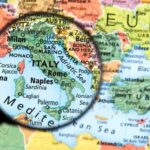As the world continues to grapple with the impacts of the COVID-19 pandemic, international travel remains largely affected by various restrictions and regulations. This article aims to provide an in-depth understanding of the current travel situation from the United States to Italy, outlining the travel restrictions, entry requirements, quarantine and testing mandates, travel guidelines for US citizens, and its impact on tourism and the economy.
Navigating through these complex measures can be quite challenging; however, this comprehensive guide aims to provide clarity for travelers considering a trip to Italy.
The ongoing global health crisis has prompted governments worldwide to implement stringent measures to control the spread of COVID-19. As countries work towards reopening their borders while continuing to prioritize public health and safety, understanding the specific travel restrictions from the US to Italy is crucial for anyone planning international travel. From entry requirements to quarantine mandates and testing regulations, each aspect is essential for travelers to comprehend before embarking on their journey.
By shedding light on these intricate details surrounding US-Italy travel restrictions, this article seeks to empower individuals with valuable information necessary for making informed decisions when planning trips abroad. It also offers insights into how these restrictions have impacted tourism and local economies while providing practical tips for navigating through the ever-changing landscape of international travel regulations.
Overview of US to Italy Travel Restrictions
The travel restrictions from the US to Italy have evolved in response to the COVID-19 pandemic. As of the latest update, travelers from the US are allowed to enter Italy for essential reasons, such as work, health, or study. However, tourism is currently not considered an essential reason for travel.
In addition to essential travel requirements, all passengers entering Italy from the US must present a negative COVID-19 test taken within 72 hours of their arrival. Upon arrival in Italy, travelers may be required to quarantine for a period of 10 days, although this requirement may vary based on the region within Italy.
It’s important for travelers from the US to stay up-to-date with the latest travel restrictions and entry requirements for Italy, as they continue to evolve in response to changing conditions related to the pandemic. Travelers should regularly check official government websites and consult with airlines or travel agencies for the most current information before making any travel plans.
| Travel Restrictions | Requirements |
|---|---|
| Essential reasons only | Valid negative COVID-19 test within 72 hours |
| Varying quarantine requirements | Check official government websites and consult with airlines |
COVID-19 Entry Requirements and Regulations
Italy has implemented travel restrictions for travelers coming from the US due to the ongoing COVID-19 pandemic. As of now, only essential travel is allowed from the US to Italy, and non-essential travel is discouraged. The Italian government has established entry requirements and regulations for those who are permitted to enter the country.
Travelers from the US must meet certain COVID-19 entry requirements when entering Italy. This includes providing proof of a negative COVID-19 test result taken within 72 hours prior to arrival, filling out a self-declaration form with their travel details and contact information, and undergoing health screenings upon arrival. Additionally, travelers may be required to quarantine for a specified period or present a completed digital Passenger Locator Form upon arrival in Italy.
Quarantine and testing requirements for travelers arriving from the US to Italy are subject to change based on the current situation. It is important for travelers to stay updated on any new developments and adhere to any changes in regulations. Failure to comply with these requirements may result in denial of entry or other consequences.
| COVID-19 Entry Requirements | Regulations |
|---|---|
| Providing negative COVID-19 test result | Filling out a self-declaration form |
| Undergoing health screenings upon arrival | Completing digital Passenger Locator Form |
Quarantine and Testing Requirements for Travelers
As of the current travel situation, it is vital for travelers to understand the quarantine and testing requirements when going from the US to Italy. As a result of the ongoing COVID-19 pandemic, travel restrictions and entry requirements have been put in place to mitigate the spread of the virus. These measures include quarantine mandates and testing regulations for all incoming travelers.
Travelers from the US to Italy are required to present a negative COVID-19 test result taken within 72 hours before their departure. Additionally, upon arrival in Italy, travelers may be subject to another COVID-19 test at their own expense. If a traveler tests positive for COVID-19 while in Italy, they may be required to quarantine according to local health regulations.
It is essential for travelers planning a trip from the US to Italy to stay updated on any changes or updates regarding quarantine and testing requirements. Travelers should also check with their airline and local authorities for any specific guidelines or regulations that may apply to their trip. By being well-informed about these requirements, travelers can ensure a smoother and more compliant travel experience during these challenging times.
Overall, understanding the quarantine and testing requirements when traveling from the US to Italy is crucial for all individuals planning international travel. By adhering to these measures and staying informed about any updates or changes, travelers can help contribute to efforts in controlling the spread of COVID-19 across borders while still being able to enjoy safe travels abroad.
Travel Guidelines for US Citizens Traveling to Italy
As of the current situation, travelers from the US to Italy are subject to various travel restrictions and requirements due to the ongoing COVID-19 pandemic. It is essential for US citizens planning a trip to Italy to stay updated on the latest regulations and entry requirements in order to ensure a smooth and hassle-free travel experience.
Below are some important guidelines and regulations for US citizens traveling to Italy:
- Check entry requirements: Before planning any trip, it is crucial for US citizens to check the latest entry requirements for traveling from the US to Italy. These requirements may include providing a negative COVID-19 test result, proof of vaccination, or completing a health declaration form.
- Quarantine and testing: Travelers from the US may be required to undergo quarantine upon arrival in Italy, depending on their vaccination status and recent travel history. Additionally, they may also need to undergo testing both before departure and upon arrival in Italy.
- Travel insurance: It is recommended for US citizens traveling to Italy to obtain comprehensive travel insurance that includes coverage for COVID-19 related expenses, including medical treatment and quarantine costs.
It is important for US citizens traveling from the US to carefully review these guidelines and requirements before planning their trip to Italy. By staying informed and adhering to these regulations, travelers can ensure a safe and enjoyable visit to this popular European destination.
Impact on Tourism and the Economy
The impact of travel restrictions and regulations from the US to Italy has had a significant effect on both tourism and the economy. With limited international travel and strict entry requirements in place, the tourism industry in Italy has suffered a major blow. This has resulted in a ripple effect on the overall economy of the country, as tourism is a vital contributor to its GDP.
Tourism Decline
The implementation of travel restrictions from the US to Italy has led to a sharp decline in tourism. Many potential visitors have been deterred by the uncertainty surrounding entry requirements, quarantine regulations, and testing procedures. As a result, popular tourist destinations in Italy have seen a noticeable decrease in foot traffic and revenue.
Economic Ramifications
The decline in tourism due to travel restrictions has had widespread economic ramifications for Italy. Businesses that rely heavily on tourist activity, such as hotels, restaurants, tour operators, and souvenir shops, have experienced financial hardship. Additionally, unemployment rates within the tourism sector have risen as businesses struggle to stay afloat amid the travel limitations.
Adaptation and Innovation
In response to the impact of travel restrictions on tourism and the economy, many businesses in Italy have had to adapt and innovate. Some have shifted their focus towards targeting domestic tourists or implementing creative marketing strategies to attract local visitors. Others have turned to online platforms and virtual experiences as a means of generating income during these challenging times.
As travel restrictions continue to evolve, it is crucial for both the Italian government and businesses within the tourism sector to work together in finding sustainable solutions that will support recovery efforts while prioritizing public health and safety.
Tips for Navigating Travel Restrictions and Requirements
As travel restrictions continue to evolve in response to the COVID-19 pandemic, it is essential for travelers to stay informed and prepared before embarking on any international trip. Navigating through the various requirements and regulations can be overwhelming, but with the right guidance, travelers can ensure a smooth and hassle-free journey from the US to Italy.
Stay Updated on the Latest Travel Advisories
Before planning your trip, it is crucial to stay informed about the current travel restrictions from US to Italy. This includes regularly checking the official websites of the US Department of State and the Italian Ministry of Foreign Affairs for any updates or changes in entry requirements and regulations. Additionally, signing up for travel alerts and newsletters from reputable sources can provide real-time information on any developments that may impact your travel plans.
Familiarize Yourself With COVID-19 Entry Requirements
As part of efforts to curb the spread of COVID-19, Italy has implemented specific entry requirements for travelers arriving from the US. This may include providing a negative PCR test result taken within a certain timeframe before departure, completing a self-declaration form, and adhering to any quarantine or testing protocols upon arrival. It is important to carefully review these requirements and ensure compliance to avoid any disruptions during your trip.
Consult With a Trusted Travel Advisor
Navigating through travel restrictions and requirements can be complex, especially when it comes to international travel during a global pandemic. Seeking guidance from a trusted travel advisor or agency can provide valuable insight and assistance in understanding the specific guidelines for traveling from the US to Italy. They can also help with itinerary planning, booking accommodations that adhere to health and safety protocols, and addressing any concerns related to navigating through the current travel landscape.
By staying informed, understanding entry requirements, and seeking professional guidance as needed, travelers can navigate through the current travel restrictions from US to Italy with confidence and peace of mind. While these measures may present certain challenges, being well-prepared will ultimately contribute to a safer and more enjoyable travel experience for all parties involved.
Future Outlook for US to Italy Travel Restrictions
As the world continues to grapple with the impact of the COVID-19 pandemic, the future outlook for US to Italy travel restrictions remains uncertain. With vaccination efforts underway and evolving public health guidelines, it is important for travelers to stay informed about the changing landscape of travel requirements and regulations.
It is likely that in the near future, there will still be stringent entry requirements for travelers from the US to Italy. These may include proof of vaccination, negative COVID-19 test results, and adherence to quarantine protocols. As the situation evolves, these requirements may be subject to change based on the prevalence of new variants and public health considerations.
Additionally, travel guidelines for US citizens traveling to Italy may continue to be updated in response to changing circumstances. It is important for travelers to regularly check official sources such as embassy websites and airline advisories for the latest information on entry requirements, testing protocols, and any travel advisories.
While there is optimism surrounding the eventual easing of travel restrictions, it is prudent for travelers to remain flexible and prepared for adjustments in their plans. Adhering to official guidance and being mindful of public health considerations will be crucial in navigating the evolving landscape of US to Italy travel restrictions.
Conclusion
As travelers continue to navigate the ever-changing landscape of global travel, it is imperative to stay informed about the latest restrictions and requirements when planning a trip from the US to Italy. The COVID-19 pandemic has significantly impacted international travel, leading to various regulations and entry requirements for those visiting Italy. From quarantine mandates to testing regulations, travelers must stay up-to-date on the current situation to ensure a smooth and safe journey.
Understanding the travel restrictions from the US to Italy is crucial for any prospective traveler. With varying measures in place, including testing requirements, quarantine mandates, and documentation needs, it is essential to be well-prepared before embarking on a trip. By familiarizing themselves with the latest guidelines and adhering to all necessary protocols, US citizens can ensure a seamless travel experience while visiting Italy.
Looking ahead, as vaccination rates continue to increase and the global situation evolves, there may be changes in travel restrictions from the US to Italy. It is important for travelers to remain flexible and adaptable in their plans, understanding that regulations may shift in response to changing circumstances.
By staying informed and maintaining awareness of any updates or developments in travel requirements, individuals can better navigate the current environment and prepare for future trips with confidence. Overall, understanding and abiding by the travel restrictions will help ensure a safe and enjoyable experience for travelers making their way from the US to Italy.
Frequently Asked Questions
Are There COVID Restrictions to Enter Italy?
Yes, there are currently COVID restrictions to enter Italy. Travelers from the US and other non-EU countries are only allowed to enter for essential reasons, such as work, health, or study. There are specific entry requirements and quarantine measures in place.
What Is Required for a US Citizen to Visit Italy?
For a US citizen to visit Italy right now, they must meet certain requirements. This includes providing proof of vaccination, a negative COVID-19 test result taken within 72 hours of arrival, and filling out a digital passenger locator form. It’s important to stay updated on these requirements as they may change.
What Is the Current Travel Advisory for Italy?
The current travel advisory for Italy is to exercise increased caution due to COVID-19. The Centers for Disease Control and Prevention (CDC) has issued a Level 3 Travel Health Notice for Italy, advising travelers to make sure they are fully vaccinated before traveling to the country.
Travelers should also be aware of local restrictions and conditions related to the pandemic while in Italy.

I’m a passionate traveler, writer, and Italophile. My fascination with Italy’s history, art, and culture has led me on countless adventures across the Italian landscape. Through “I Live Italy,” I share my love for this extraordinary country and aims to inspire others to explore its boundless beauty.




